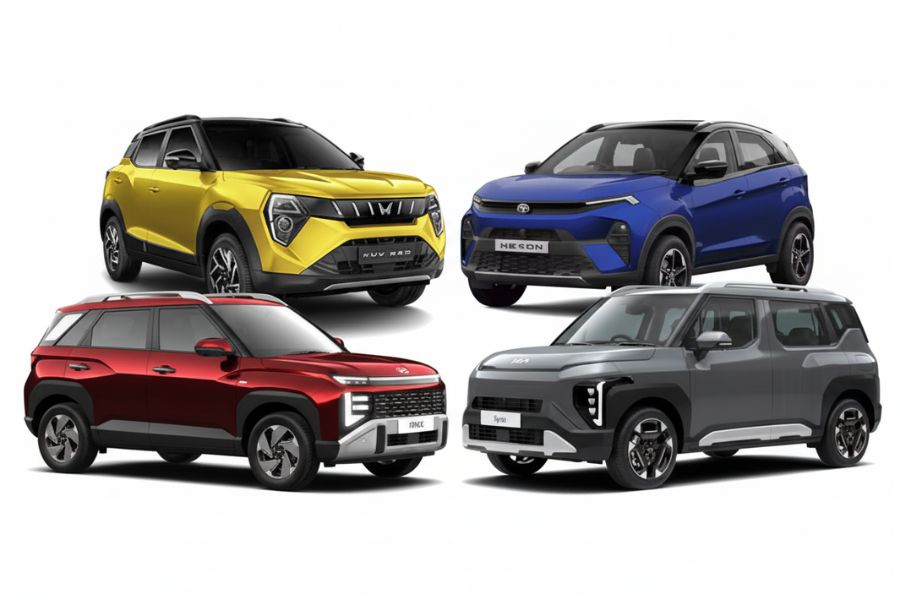The premium electric crossover segment in India is witnessing a surge in competition. Alongside seasoned contenders like the Kia EV6, Hyundai Ioniq 5, and Volvo C40 Recharge, the field has recently expanded with the introduction of the BMW iX1 LWB and BYD Sealion 7. Here’s a detailed comparison of how these five EVs stack up on paper—and more importantly—on the road.
Specifications Snapshot: Powertrain, Battery & Layout
| Model | Battery (kWh) | Motor Layout | Power (hp) | Torque (Nm) | Drive Type | Claimed Range (km) |
|---|---|---|---|---|---|---|
| BYD Sealion 7 | 82.56 | Dual motor (AWD) | 530 | 690 | AWD | 456 (WLTP) |
| BMW iX1 LWB | 66.4 | Single motor (Front) | 204 | 250 | FWD | 531 (MIDC) |
| Kia EV6 | 84 | Dual motor (AWD) | 325 | 605 | AWD | 663 (MIDC) |
| Hyundai Ioniq 5 | 72.6 | Single motor (Rear) | 217 | 350 | RWD | 631 (MIDC) |
| Volvo C40 Recharge | 78 | Dual motor (AWD) | 408 | 670 | AWD | 530 (WLTP) |
Performance Metrics: On-Road Agility
Despite being one of the heaviest in the group at 2,340kg, the BYD Sealion 7 stands out for its exceptional output, delivering 530hp and 690Nm—the highest in this segment. The C40 Recharge follows closely with 408hp and 670Nm. While the Kia EV6 edges out on battery size, it’s slightly down on power at 325hp.
Power-to-weight and torque-to-weight ratios highlight the Sealion 7’s advantage:
-
Power-to-weight: 226.5 hp/tonne (highest)
-
Torque-to-weight: 294.87 Nm/tonne (second only to the Volvo)
In contrast, the BMW iX1, with a front-wheel drive layout and 204hp output, has the least aggressive setup in terms of both power delivery and layout.
Acceleration: Quickest to 100kmph
| Model | 0–100 km/h (sec) |
|---|---|
| BYD Sealion 7 | 4.43 |
| Volvo C40 Recharge | 4.78 |
| Kia EV6 | 5.16 |
| Hyundai Ioniq 5 | 7.48 |
| BMW iX1 LWB | 8.34 |
Rolling Acceleration: Mid-Range Muscle
| Model | 20–80 km/h (sec) | 40–100 km/h (sec) |
|---|---|---|
| BYD Sealion 7 | 2.48 | 2.91 |
| Volvo C40 Recharge | 2.69 | 3.07 |
| Kia EV6 | 2.77 | 3.49 |
| Hyundai Ioniq 5 | 4.12 | 4.82 |
| BMW iX1 LWB | 4.83 | 5.72 |
Range and Efficiency: Not All About Power
The Kia EV6 boasts the longest claimed range at 663km, followed by the Ioniq 5 (631km) and iX1 LWB (531km). Notably, the Sealion 7’s range of 456km (WLTP) may seem underwhelming, but it’s measured using the more conservative global WLTP cycle—unlike the MIDC cycle used for most India-spec cars.
So, while others look better on paper, real-world efficiency may narrow the gap.
Pricing and Value: What Do You Pay For?
| Model | Price (Rs, lakh ex-showroom) |
|---|---|
| Hyundai Ioniq 5 | 46.05 |
| BYD Sealion 7 | 48.90–54.90 |
| BMW iX1 LWB | 49.00 |
| Volvo C40 Recharge | 59.00 |
| Kia EV6 | 65.97 |
The Volvo C40 Recharge, though locally assembled, carries a hefty tag likely due to its badge, safety kit, and Scandinavian design ethos.
Verdict: BYD Sealion 7—A New Benchmark for Performance
The BYD Sealion 7 brings serious performance firepower to this segment, outpacing rivals in straight-line speed, rolling acceleration, and power-to-weight efficiency. While it does fall short on range (on paper) and carries CBU pricing, it offers exceptional real-world performance at a more accessible price than some less powerful rivals.
If outright performance and AWD grip matter more to you than badge prestige or maximum range, the Sealion 7 makes a compelling case as the most thrill-focused electric crossover under ₹55 lakh in India today.
Read More:




